By Craig this
Previous “By the Numbers” articles in The Flyer have focused on the gains made by clergywomen in serving The United Methodist Church as local church pastors, district superintendents, bishops, and conference officers. This article examines and analyzes where and how clergywomen serve the local church.
The big picture
Of those clergypersons serving local churches in the United States, 26% are clergywomen and 74% are clergymen (see Table I). In other words, 1 in 4 churches is served by a clergywoman. But, while the number of women pastors has increased dramatically over the past 20 years, this data needs to be carefully analyzed to determine what level of pastoral leadership women have attained in comparison to men.
A different picture emerges when the data are separated into senior pastor and associate pastor. Of those clergy serving as senior pastors, 22% are clergywomen and 78% are clergymen. One in 5 churches, then, is served by a clergywoman as senior pastor. This also indicates that women are less likely than men to serve as senior pastors in larger congregations with multiple pastoral staff positions.
The distribution of clergywomen and clergymen as associate pastors is much more evenly divided, as 49% of associate pastors are clergywomen and 51% are clergymen (see Tables I and II).
The Jurisdictional Picture
The jurisdictional numbers look good for the most part. All of the jurisdictions appear to have a greater percentage of clergywomen serving their local churches than the national average with the exception of the Southeastern Jurisdiction where clergywomen make up only 15% of United Methodist senior pastors (see Tables III and IV).
As with U.S. churchwide statistics, the percentage of clergywomen serving as associate pastors is nearly identical to that of the men. In fact, in three jurisdictions, North Central, Northeastern, and Western, clergywomen represent a greater percentage than clergymen serving as associate pastors (see Table V).
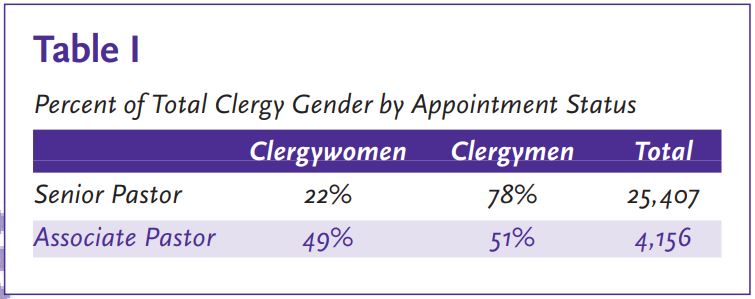
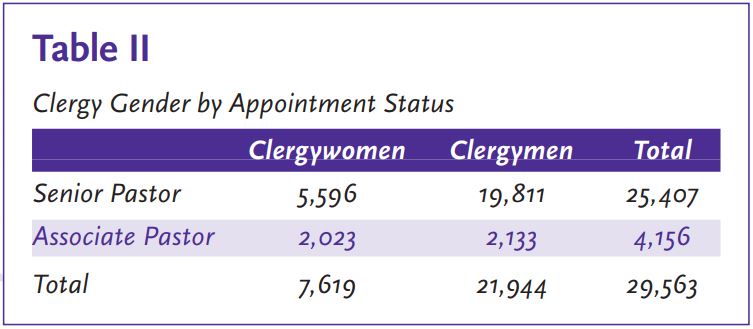
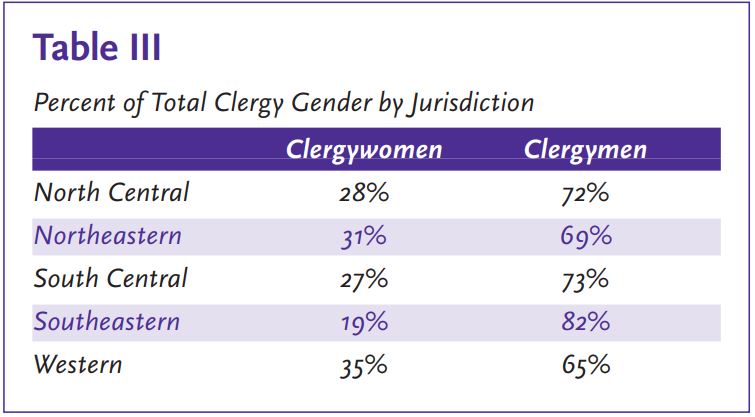
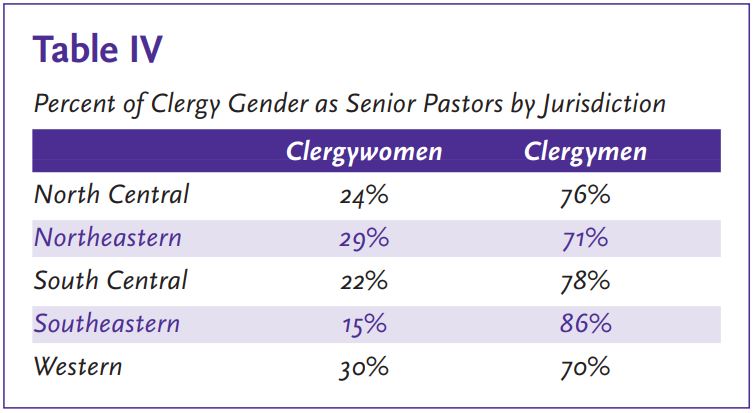
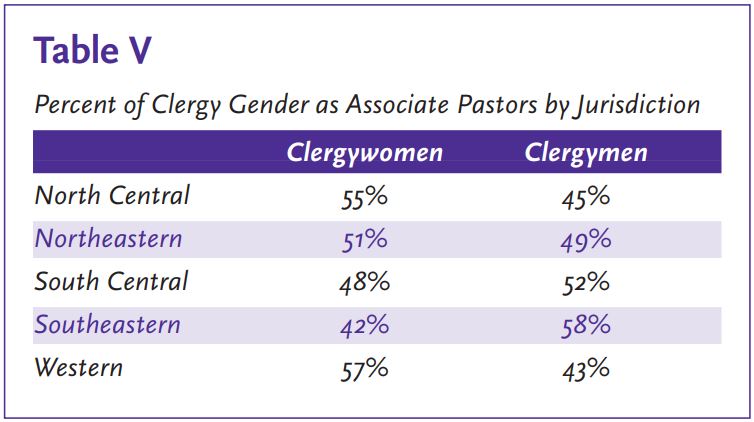
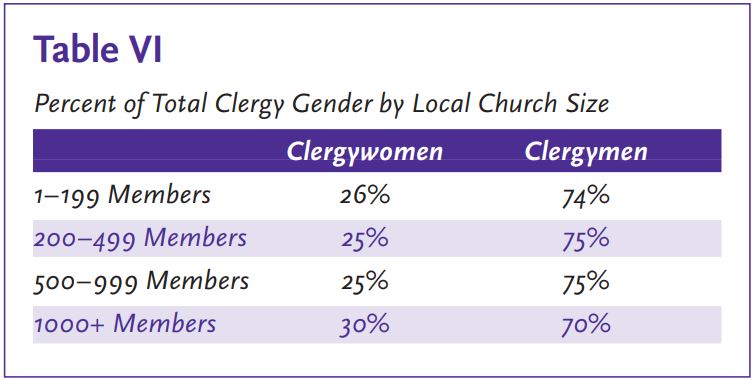
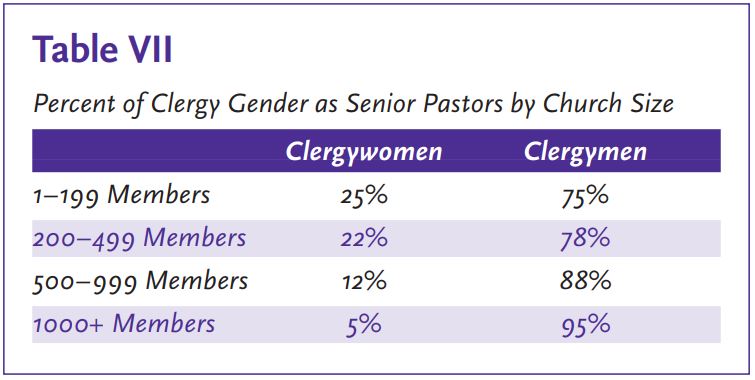
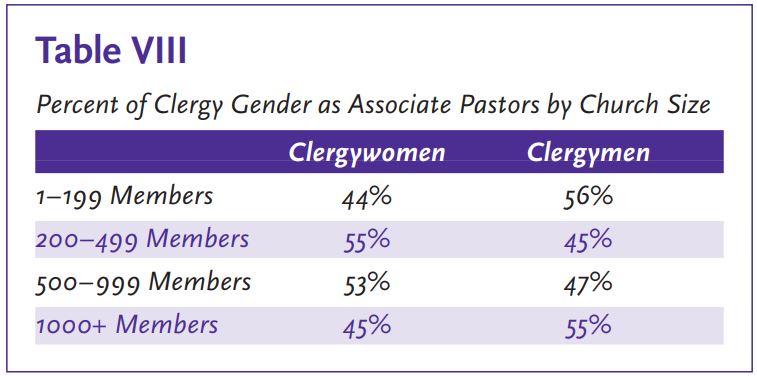
The Local Church Picture
The real story, though, lies in the analysis of the data by church size. When the aggregate collection of data is analyzed, the number of women pastors in local congregations is increasing steadily. Twenty-five percent of the clergy serving in churches with 1–199 members, 200–499 members, and 500–999 members are clergywomen. In churches of 1,000 or more members, only 3 in 10 (30%) clergy serving are women (see Table VI).
However, the progress of women is mitigated by church size and senior-versus-associate-pastor status. For example, while clergywomen comprise 25% of the all clergy working in congregations of 500– 999 members, clergywomen make up only 12 percent of the senior pastors in these churches. Women are more likely to be associate pastors in these settings. Likewise, clergywomen comprise 30% of all clergy serving local churches with 1,000 or more members. However, women account for only 5% of senior pastors in 1,000+ member churches (see Table VII).
Conclusion
Clergywomen continue to make gains in positions of authority across the church, such as district superintendents and bishops. Clergywomen continue to gain in numbers in serving the local church; however, they lack a greater representation in the area of senior pastors in those churches of 1,000 or more members.
Why is this so critical? Forty-seven percent of the clergy delegates to the 2004 General Conference came from churches with 1,000 or more members while only 10% came from churches with 1–199 members. Clearly, the elections of delegates to General and Jurisdictional Conference as well as the assignment of clergy to churchwide agencies tend to favor those who serve large churches. In many instances, too, appointment as district superintendent or other annual conference-level post—even election as bishop— tends to favor clergy from larger and more influential congregations. In order for clergywomen to have access to these avenues of vocational advancement and influence in the decision-making life of the church, it follows that ordained women must be better represented as senior pastors.
The challenge for the denomination is to see that women are supported, groomed for, and given opportunities to become the lead pastors in large congregations.
